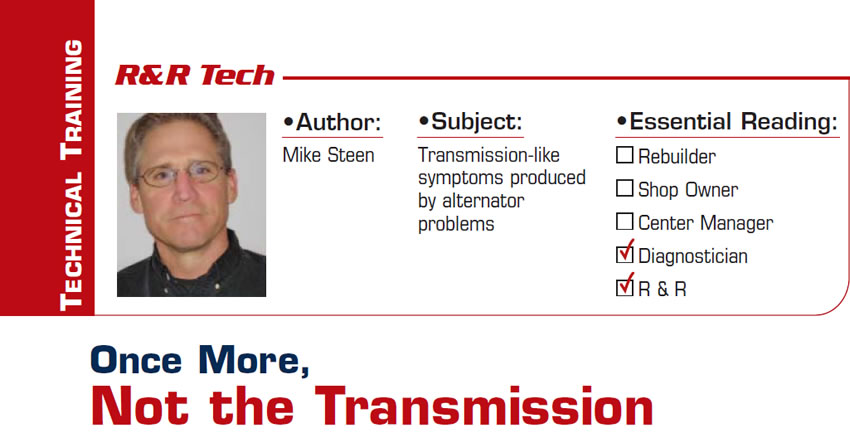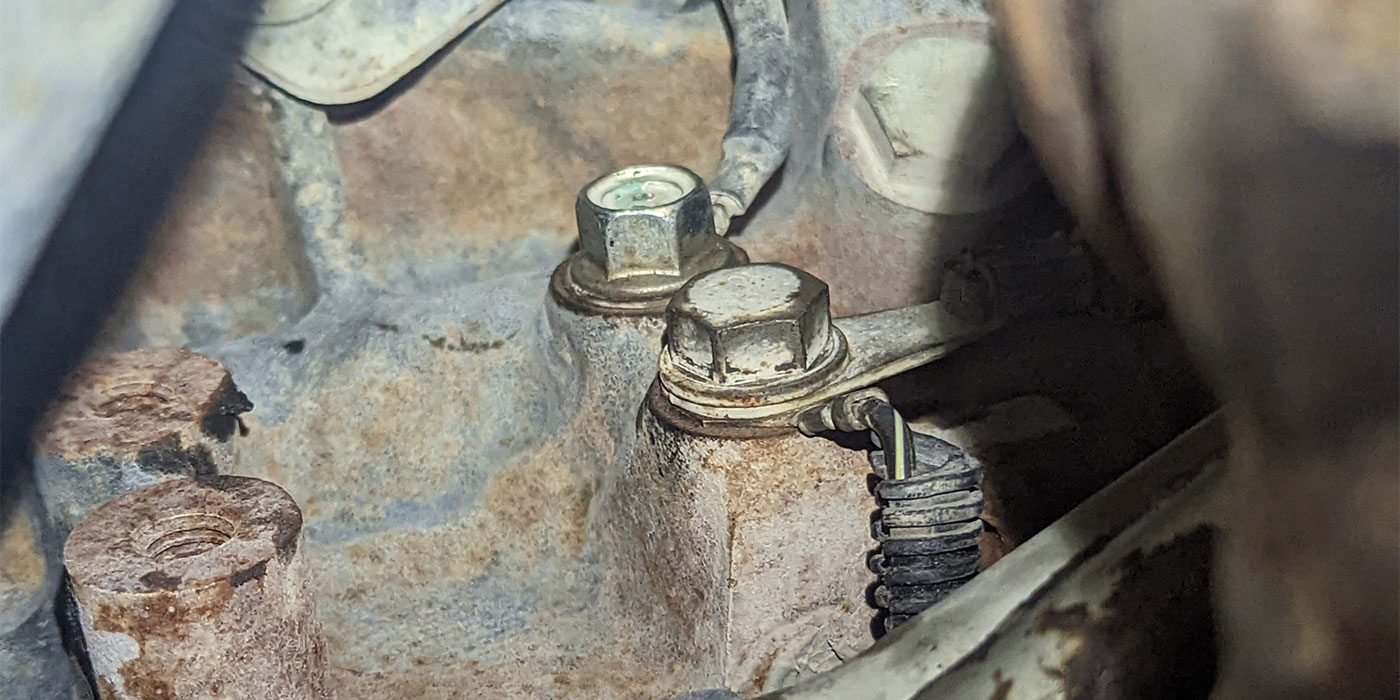
R&R Tech
- Subject: Transmission-like symptoms produced by alternator problems
- Essential Reading: Diagnostician, R & R
- Author: Mike Steen
It’s very simple to get steered in the wrong direction when you’re diagnosing a transmission complaint. There are so many different sensors and components that can cause transmission-like symptoms that at first it seems as if without a doubt you have a transmission problem, and from a customer’s perspective they are convinced it’s going to cost them an arm and a leg, which provides you the opportunity to be a hero and gain a customer for life.
A couple of years ago I recall reading an article by Wayne Colonna that pointed out several external factors that can produce symptoms that seem to point to possible internal transmission problems. In this article we want to talk about another unlikely component that can send you into a diagnostic tail spin: the alternator.
A common complaint of a cycling torque-converter lockup and/or fourth-gear hunting with no codes on Dodge diesel truck applications can be caused by a bad alternator diode. During cruise a defective diode can allow for high voltage spikes to occur, causing electrical noise within the TPS circuit. Also you’ll find that Dodge ran the TPS wiring harness alongside the alternator’s wiring harness, which can cause electrical noise to be induced in the TPS circuit. Besides the obvious havoc that a poor charging system, bad diodes and bad grounds can have on a vehicle’s electrical system, it can also fail mechanically.
Here’s something I wasn’t aware of until recently, a trend of several vehicle manufacturers using what’s called an isolator decoupler pulley (IDP). The IDP is an improvement on the overrunning alternator pulley, which has been around since 1990. Basically it’s an alternator pulley that works in the normal way except it has a one-way clutch that allows the drive belt to freewheel under certain conditions, such as sudden engine decelerations. Incorporating the overrunning alternator pulley or an IDP eliminates belt noise; it also requires less belt tension than the previous systems. Less tension means fewer loads and less fuel used.
One of the most-common problems with these systems on higher-mileage vehicles is bearing noise. A worn bearing can cause a brief noise when you shut the engine off. Another possibility is that a customer might complain of a noise during the 1-2 shifts. This complaint is more likely to come from a driver with a heavy foot who makes a lot of wide-open-throttle upshifts. One thing to keep in mind is that the engine decelerates rapidly during hard shifts. If you suspect a bad bearing, have someone rev the engine and then quickly shut the ignition off while you listen for a noise at the front of the alternator.
Diagnosing these would-be transmission problems can be a challenge, but also rewarding. It’s one of the best ways I know to get a customer telling everyone they know how great your shop is!

Mike Steen is the manager of Certified Transmission’s Technical Department.













